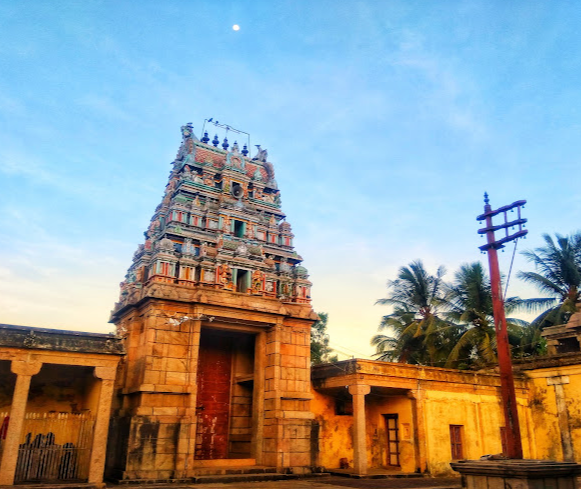Origin/History :-
- Early Existence: The original temple is believed to have existed before the 7th century, as hymns by Thirugnanasambandar, a revered Saivite saint, were composed in praise of Lord Shiva of this temple during that period.
- Chola Reconstruction: The temple was reconstructed in stone during the Chola period, reflecting the architectural advancements and religious fervor of that era.
- Vijayanagara Expansion: Later, the temple underwent extensions and enhancements during the Vijayanagara period, further enriching its structure and significance.
- Maintenance: The temple has been maintained by the Nattukottai Nagarathars, a community known for their philanthropic contributions and dedication to temple preservation.
Puranic Significance :-
Sage Bringhi was a devoted worshipper of Lord Shiva, focusing solely on him and neglecting all other deities. This singular devotion angered Parvati, who, in her rage, drained Bringhi of all his blood and flesh—symbolising the feminine aspect of the human body—leaving him reduced to just bones. Despite this, Bringhi continued to refuse to acknowledge Parvati and persisted in worshipping only Lord Shiva.
Observing this, Parvati prayed to Lord Shiva and merged with him, creating the form of Ardhanareeswarar, which embodies both Shiva and Parvati. However, Bringhi still failed to realise the inseparability of the Lord and the Mother.
Determined to prove his devotion, he transformed into a bee and attempted to circumambulate Shiva alone, boring a hole through the centre of the divine form. This act infuriated Parvati, who then cursed the sage to remain a bee forever.
Recognizing his mistake, Bringhi pleaded for mercy. In her kindness, Mother Parvati forgave him and advised him that she and Lord Shiva were inseparable. She instructed him to worship both to attain salvation. Thus, Bringhi remained in the form of a bee, leading to Lord Shiva being called Vandurainathar or Vanduthurainathar (with "vandu" meaning bee or insect).
